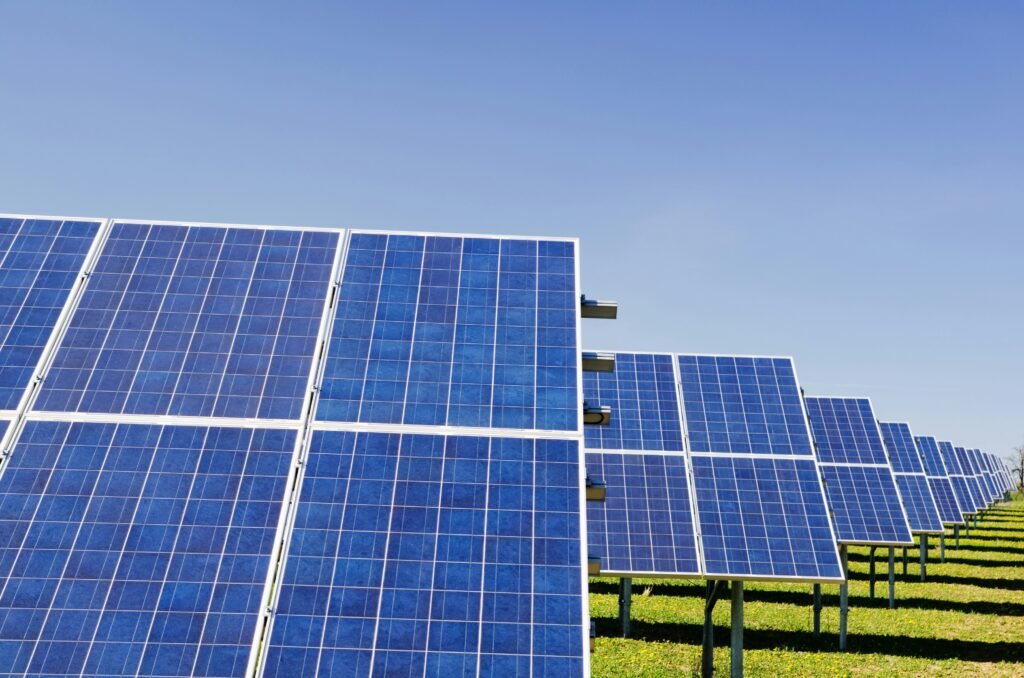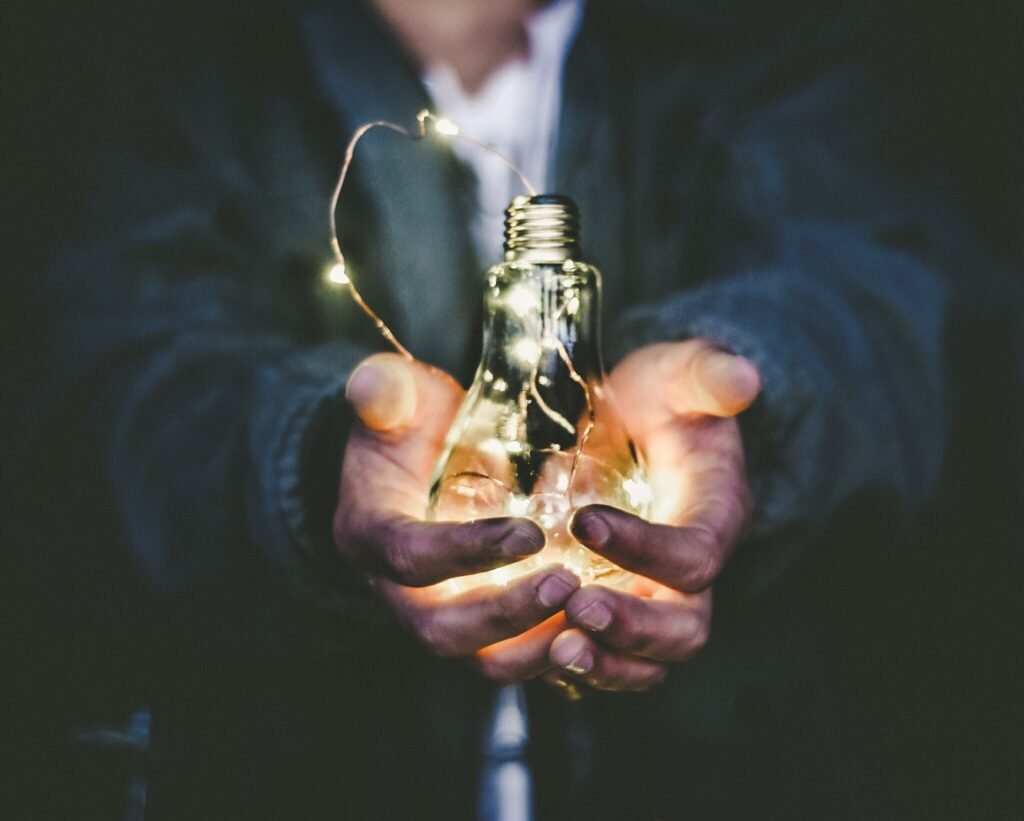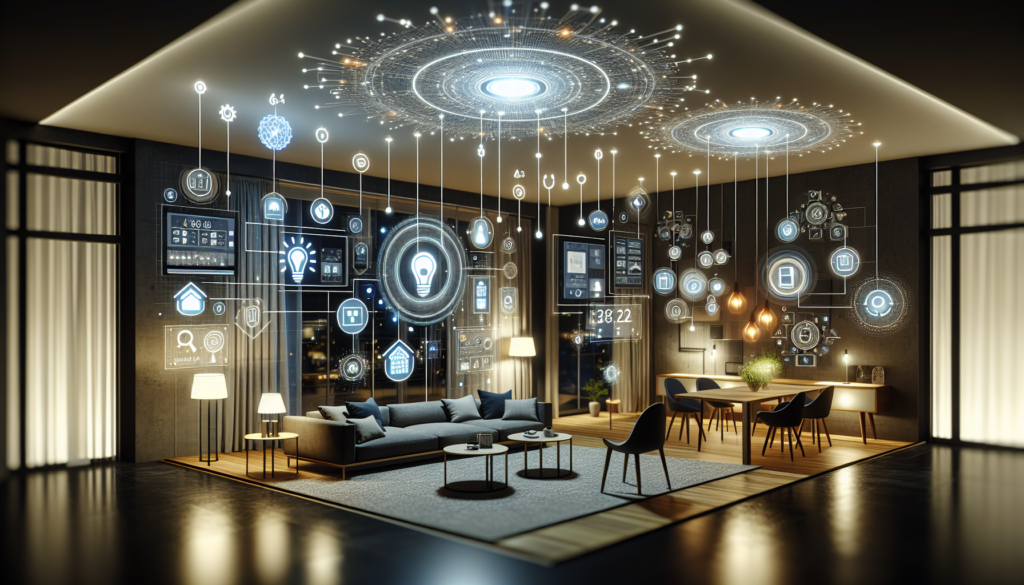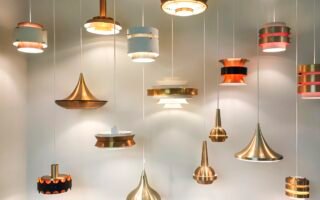Are you tired of high energy bills and inefficient lighting? It’s time to upgrade your lighting with energy-efficient solutions. By making the switch, you can not only reduce your carbon footprint but also save money in the long run. From LED bulbs to smart lighting systems, there are a variety of options available that can transform your space while keeping your energy consumption in check. Say goodbye to flickering bulbs and hello to a brighter, more sustainable future.
Benefits of energy-efficient lighting
Energy-efficient lighting offers a range of benefits that can positively impact both individuals and the environment. By transitioning to energy-efficient lighting solutions, you can enjoy lower energy consumption, cost savings in the long run, and a reduced carbon footprint.
Lower energy consumption
One of the key advantages of energy-efficient lighting is its ability to significantly reduce energy consumption. Traditional lighting options, such as incandescent bulbs, waste a substantial amount of energy in the form of heat. In contrast, energy-efficient lighting options like LED (Light Emitting Diodes) and CFL (Compact Fluorescent Lamp) bulbs convert a higher percentage of electricity into light, resulting in reduced energy usage.
Cost savings in the long run
While energy-efficient lighting solutions may require a higher upfront investment, they offer substantial cost savings in the long run. With lower energy consumption, you can expect to see a significant reduction in your electricity bills. The lifespan of energy-efficient bulbs, particularly LED bulbs, is also considerably longer than traditional incandescent bulbs. This means fewer replacements and lower maintenance costs, leading to additional financial savings over time.
Reduced carbon footprint
Transitioning to energy-efficient lighting is an effective way to reduce your carbon footprint. Energy-efficient bulbs produce less greenhouse gas emissions compared to traditional options, contributing to a positive environmental impact. By conserving energy, you actively contribute towards combating climate change and promoting a sustainable future.
Determining your lighting needs
Before making the switch to energy-efficient lighting, it’s important to assess your current lighting setup, calculate your energy usage, and identify areas for improvement. This will help you make informed decisions when selecting the most suitable energy-efficient lighting options for your needs.
Assessing current lighting setup
Take a moment to evaluate your existing lighting fixtures. Are you using traditional incandescent bulbs, CFL bulbs, or a mix of different lighting technologies? Assess the different areas in your home or workplace and note down the types of bulbs used, the amount of lighting required, and any areas that need improvement.
Calculating energy usage
To determine your energy usage, you can start by reviewing your electricity bills. Look for the total kilowatt-hours consumed each month, specifically for lighting purposes. This will give you an idea of your baseline energy consumption and help you understand the potential energy savings that can be achieved by switching to energy-efficient lighting.
Identifying areas for improvement
Once you have assessed your current lighting setup and calculated your energy usage, you can identify areas where energy-efficient lighting can make a significant impact. Focus on spaces that are frequently used or where you spend a considerable amount of time. This could include living rooms, kitchens, offices, or workspaces. By targeting these areas, you can maximize the benefits of energy-efficient lighting and optimize your overall lighting experience.

Types of energy-efficient lighting
There are several energy-efficient lighting options available, each with its own unique characteristics and advantages. By understanding the different types of lighting, you can choose the option that best suits your needs.
LED lighting
LED lighting is a popular choice when it comes to energy-efficient solutions. LEDs use significantly less energy compared to other lighting technologies and have an exceptionally long lifespan. LED bulbs are available in various colors, brightness levels, and designs, making them suitable for a wide range of applications.
CFL lighting
CFL lighting, often known as energy-saving bulbs, is another energy-efficient option worth considering. CFL bulbs use less energy than incandescent bulbs and offer a longer lifespan. While CFL bulbs initially take a few moments to reach full brightness, they provide a warm and consistent light once fully illuminated.
Halogen incandescent
Halogen incandescent bulbs are a more energy-efficient alternative to traditional incandescent bulbs. These bulbs contain a halogen gas that allows them to operate at higher temperatures while producing brighter light. Halogen incandescent bulbs are commonly used for accent lighting and spotlighting.
Daylighting
Daylighting refers to the practice of utilizing natural daylight to illuminate interior spaces. By strategically positioning windows, skylights, and other architectural features, you can optimize natural light and reduce the need for artificial lighting during daylight hours. Daylighting not only saves energy but also provides numerous health benefits.
LED lighting
LED lighting is widely recognized as one of the most energy-efficient lighting solutions available. It offers numerous advantages over traditional incandescent bulbs and provides a wide range of options to suit various lighting needs.
Advantages of LED lighting
LED lighting offers several benefits that make it an attractive choice for energy-conscious individuals. Firstly, LEDs consume significantly less energy, resulting in reduced electricity bills. They also have a longer lifespan, lasting up to 25 times longer than incandescent bulbs. LED bulbs are more durable, resistant to vibrations, and emit very little heat, making them safer to use. Additionally, LED bulbs are available in a variety of colors and lighting styles, allowing you to create the desired ambiance in any space.
Comparing LED to traditional incandescent bulbs
When comparing LED bulbs to traditional incandescent bulbs, the differences in energy efficiency and lifespan are striking. LED bulbs use approximately 75-80% less energy than incandescent bulbs to produce the same amount of light, making them highly efficient. Additionally, while incandescent bulbs typically last around 1,000 hours, LED bulbs can last for 20,000 to 50,000 hours, depending on the quality and usage. This significant difference in lifespan translates to long-term cost savings and reduced maintenance efforts.
Choosing the right LED bulb for your needs
When selecting LED bulbs, it’s important to consider factors such as brightness, color temperature, and beam angle. The brightness of an LED bulb is measured in lumens, and the higher the lumens, the brighter the light emitted. Color temperature determines the color appearance of the light, with lower values producing warm and cozy light, and higher values producing cool and bright light. Beam angle refers to the width of the light distribution, with narrower angles creating focused lighting and wider angles providing more diffused lighting. Consider your specific lighting requirements and preferences to choose the right LED bulb for each space.

CFL lighting
CFL lighting, also known as compact fluorescent lamps, is another energy-efficient lighting choice that provides a balance between affordability and energy savings. Understanding the benefits and differences between CFL and LED lighting will help you make an informed decision when considering CFL bulbs.
Benefits of CFL lighting
CFL bulbs offer several advantages that make them an attractive option. Similar to LED bulbs, CFL bulbs consume significantly less energy than incandescent bulbs, resulting in lower energy bills. They also have a longer lifespan than incandescent bulbs, typically lasting around 10,000 hours or more. CFL bulbs produce less heat and emit light evenly, making them suitable for various applications.
Differences between CFL and LED
The main difference between CFL and LED lighting lies in their technology. CFL bulbs contain a small amount of mercury vapor, which is used to produce UV light that excites phosphor coating inside the bulb. This process generates visible light. LED bulbs, on the other hand, utilize a different mechanism that involves the movement of electrons within a semiconductor, resulting in the emission of light. Additionally, LED bulbs reach full brightness instantly, while CFL bulbs may take a short time to achieve full illumination.
Considerations when using CFL bulbs
When using CFL bulbs, it’s important to handle them with care due to the small amount of mercury they contain. It’s essential to recycle CFL bulbs properly and avoid breakage. CFL bulbs are sensitive to frequent on/off cycling, which can reduce their overall lifespan. Therefore, CFL bulbs are better suited for spaces where lights are typically left on for extended periods.
Halogen incandescent
Halogen incandescent bulbs provide an energy-efficient alternative to traditional incandescent bulbs while offering enhanced lighting capabilities. Understanding how halogen bulbs work and where to use them will help you make the most of this lighting option.
Understanding halogen incandescent bulbs
Halogen incandescent bulbs are similar in construction to traditional incandescent bulbs but utilize a halogen gas fill and a stronger quartz envelope. The halogen gas enables the tungsten filament to operate at higher temperatures, producing more light for the same amount of energy. These bulbs also have a longer lifespan compared to traditional incandescent bulbs, making them a more energy-efficient choice.
Efficiency and lifespan of halogen bulbs
Halogen incandescent bulbs are more energy-efficient than traditional incandescent bulbs, converting a greater percentage of energy into visible light. They offer a high color rendering index (CRI), which means they accurately represent colors. The lifespan of halogen bulbs is typically longer compared to incandescent bulbs, but still shorter than LED bulbs. However, they are relatively more affordable and can be an excellent choice for specific lighting applications.
Where to use halogen incandescent bulbs
Halogen incandescent bulbs are often used in spaces where strong or focused lighting is desired. They work well as accent lighting for displays, artwork, or architectural features. Halogens are also commonly used as spotlighting for specific areas, such as stages or retail displays, where a high level of illumination is essential. Due to their ability to produce intense light, halogen incandescent bulbs are well-suited for applications that require precise lighting control.

Daylighting
Incorporating natural daylight into your living or working spaces offers numerous benefits, both in terms of energy efficiency and the overall well-being of individuals. By maximizing the use of natural light, you can create brighter and healthier environments.
Benefits of incorporating natural daylight
Daylighting offers many advantages that contribute to a better indoor environment. Natural light has been proven to positively impact mood, productivity, and overall well-being. By relying on natural light during daylight hours, you reduce your reliance on artificial lighting, leading to significant energy savings. Daylighting can also enhance the aesthetics of your space, providing a more vibrant and inviting atmosphere.
Designing spaces to maximize natural light
To maximize the benefits of natural light, it’s crucial to design your spaces with daylighting in mind. Consider the orientation of windows and skylights, ensuring they capture as much direct sunlight as possible. Incorporate light-colored surfaces and reflective materials to amplify natural light in the room. Position workstations or seating areas near windows to maximize the use of daylight and create a connection to the outdoors.
Using skylights and windows strategically
Skylights and windows are essential elements in daylighting design. Skylights allow natural light to penetrate deeper into the space and can be particularly effective in areas with limited or no access to windows. Proper placement and sizing of windows are crucial to ensure optimal daylight penetration. By strategically incorporating skylights and windows, you can create a well-lit and visually appealing environment while minimizing the need for artificial lighting.
Energy-saving lighting control options
In addition to selecting energy-efficient lighting options, implementing lighting controls can further enhance energy savings. By incorporating dimmer switches, occupancy sensors, or motion-activated lighting, you can optimize energy consumption based on occupancy and specific lighting needs.
Dimmer switches
Dimmer switches allow you to adjust the brightness levels of your lights to match your desired ambiance and lighting requirements. By dimming the lights when full brightness is not necessary, you can conserve energy and prolong the lifespan of your bulbs. Dimmer switches are particularly useful in areas where lighting demands vary, such as dining rooms, living rooms, or bedrooms.
Occupancy sensors
Occupancy sensors detect the presence or absence of people in a room, automatically turning the lights on or off accordingly. These sensors ensure that lights are only activated when needed, reducing energy waste caused by lights being left on in unoccupied spaces. Occupancy sensors are commonly used in offices, hallways, or restrooms where constant lighting control is required.
Motion-activated lighting
Motion-activated lighting operates similarly to occupancy sensors but is triggered specifically by detecting motion. These sensors are useful in areas where frequent movement occurs, such as garages, entryways, or outdoor spaces. By automatically turning on the lights when motion is detected and turning them off after a set period of inactivity, energy consumption can be minimized.

Calculating energy savings
Before implementing an energy-efficient lighting plan, it is essential to estimate the potential energy savings, consider the return on investment, and factor in maintenance and replacement costs.
Estimating energy savings potential
To estimate energy savings, compare the energy consumption of your existing lighting setup with the potential energy consumption of your new energy-efficient lighting. Consider factors such as the number of hours each light is used, wattage, and the cost of electricity per kilowatt-hour. This comparison will give you an idea of the potential energy savings that can be achieved by transitioning to energy-efficient lighting.
Considering the return on investment
While energy-efficient lighting may require a higher upfront investment, it is important to factor in the potential return on investment. Calculate the payback period by dividing the initial cost of the lighting upgrades by the annual energy savings. This will give you an estimate of how long it will take to recover your initial investment through energy savings. Additionally, consider any available rebates or incentives offered by utility companies or government programs, as they can significantly reduce the upfront costs.
Factoring in maintenance and replacement costs
In addition to energy savings, it is crucial to consider the maintenance and replacement costs associated with different lighting options. LED bulbs, for example, have a longer lifespan and require less frequent replacement compared to traditional incandescent bulbs. This reduces the maintenance efforts and replacement expenses over time. By factoring in these costs, you can make a more informed decision regarding the long-term financial implications of your lighting choices.
Implementing an energy-efficient lighting plan
After evaluating your lighting needs, understanding the different types of energy-efficient lighting, and calculating potential energy savings, it’s time to implement an energy-efficient lighting plan. Creating a retrofit plan, working with a lighting specialist, and obtaining financing for upgrades will help you successfully transition to energy-efficient lighting.
Creating a lighting retrofit plan
Start by creating a comprehensive lighting retrofit plan that outlines the specific changes and upgrades required for each area. Determine which lighting technologies and fixtures will be used in different spaces. Consider factors such as desired light levels, color temperature, and ambiance requirements. This plan will serve as a roadmap to ensure a smooth transition to energy-efficient lighting throughout your home or workplace.
Working with a lighting specialist
Engaging the expertise of a lighting specialist or consultant can be highly beneficial when implementing an energy-efficient lighting plan. These professionals can provide valuable insights and recommendations based on their knowledge and experience. They can help identify opportunities for further energy savings, provide guidance on selecting the most suitable lighting options, and assist with the implementation process to ensure optimal results.
Obtaining financing for upgrades
Financing options are available to support your energy-efficient lighting upgrades. Explore potential rebates, grants, or low-interest loans offered by your local utility company or government organizations. Additionally, some financial institutions provide specialized financing programs for energy-efficient improvements. By taking advantage of these opportunities, you can make the transition to energy-efficient lighting more financially feasible.
In conclusion, upgrading your lighting to energy-efficient solutions offers numerous benefits, including lower energy consumption, cost savings in the long run, and a reduced carbon footprint. By assessing your current lighting setup, understanding the different types of energy-efficient lighting, and considering factors like natural daylighting and lighting controls, you can create a comprehensive plan to implement energy-efficient lighting throughout your space. With careful consideration of energy savings potential, return on investment, and maintenance costs, you can make informed decisions and successfully transition to a more environmentally friendly and cost-effective lighting solution.



